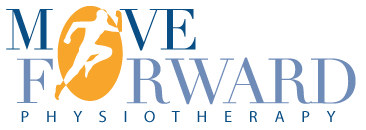Cervical Spine – Whiplash
Physiotherapy can greatly assist patients who have whiplash injury following a motor vehicle accident.
 The NSW Motor Accidents Authority published the “Guidelines for the Management of Whiplash-Associated Disorders” in 2001. In this publication the recommended treatment includes “Manual and physical therapies – exercise” and details that range of movement exercises, muscle re-education and low load isometric exercises should be implemented immediately. Joint mobilisations are also recommended and should be commenced within the first 7 days following the injury. Recommendations for immediate physiotherapy treatment were included due to a growing research base in the area of cervical whiplash injuries.
The NSW Motor Accidents Authority published the “Guidelines for the Management of Whiplash-Associated Disorders” in 2001. In this publication the recommended treatment includes “Manual and physical therapies – exercise” and details that range of movement exercises, muscle re-education and low load isometric exercises should be implemented immediately. Joint mobilisations are also recommended and should be commenced within the first 7 days following the injury. Recommendations for immediate physiotherapy treatment were included due to a growing research base in the area of cervical whiplash injuries.
What is whiplash?
The rapid motion of the neck during a crash can result in a number of injuries. Many of these injuries are impossible to see on x-rays or MRI. Even though there may be minimal damage to your car or cycle, you can still sustain whiplash. In fact, even at low speeds, occupants can experience severe whiplash.
Signs and Symptoms
- Neck pain and stiffness
- Headache
- Upper back and/or arm pain
- Associated stress and anxiety
- Jaw tightness or pain
Prognosis
Most soft tissue injuries take 6 to 8 weeks to settle down. It is important to implement early treatment and encourage return to normal function as soon as possible. Research has shown that the prognosis of whiplash depends on many factors, including the availability of early physiotherapy intervention which aims to prevent the injured joints from “seizing up”, retrain stabilising muscle function, encourage movement and reassure the patient. The speed or direction of the accident may not be as important a factor as your stress and anxiety related to the accident. It is important that you continue to move as freely as you can and take advice from your physiotherapist and doctor.
Treatment of Whiplash
Treatment will include mobilisations, postural correction exercises, stabilising muscle exercises, stretching and more general exercises for the upper body. Education is an important part of treatment. Your physiotherapist may also use other techniques

